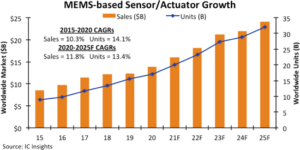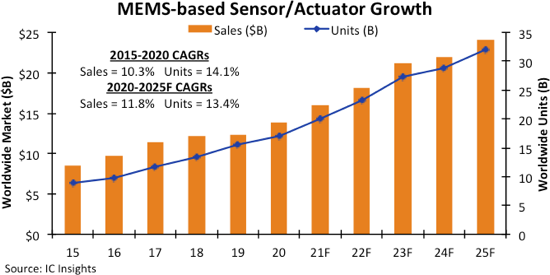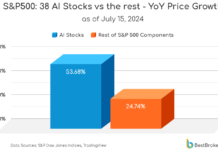
Sales of semiconductor sensors and actuators made with microelectromechanical systems (MEMS) technology are expected to grow about 16% in 2021 to a record-high $15.9 billion after an 11% increase in 2020 during the economic havoc caused by the Covid-19 virus pandemic and the automotive industry’s worst year in decades, according to IC Insights’ 2021 O-S-D Report—A Market Analysis and Forecast for Optoelectronics, Sensors/Actuators, and Discretes.
Recovery growth in MEMS-based sensor/actuator products surged in the second half of 2020 when manufacturers quickly began to refill inventories after seeing signs of stabilization and recovery in key end-use markets, says the 350-page O-S-D Report.

Between 2020 and 2025, sales of MEMS-based sensors and actuators are expected to increase by a compound annual growth rate (CAGR) of 11.8% to $24.1 billion with shipments rising by a CAGR of 13.4% to 32.1 billion units (Figure 1), based on the O-S-D Report’s five-year forecast.
Around half of the semiconductor sensors and nearly all actuators sold each year contain tiny MEMS transducer structures and circuit functions to perform their jobs in end-use applications. In 2020, about 83% of sales in the total $16.5 billion sensor/actuator market came from devices built with MEMS technology. About 55% of the total 30.9 billion sensors and actuators shipped worldwide in 2020 contained MEMS, based on data in the O-S-D Report. Approximately 44% of sales in MEMS-based sensors and actuators are generated annually by automotive applications.
Total sales of MEMS-based pressure sensors, microphone chips, accelerometers, gyroscope devices, and actuators are expected to increase annually by double-digit percentages until 2024, when the next cyclical economic slowdown is expected to cut growth to 4%, followed by a modest 9% rebound in 2025.

















